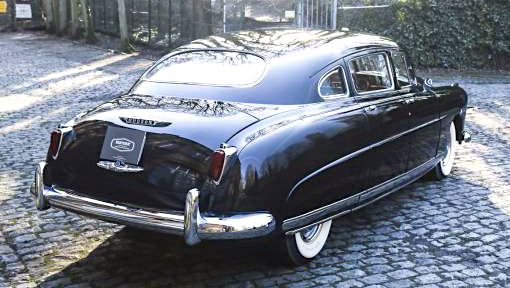Many redesigned cars sold well. Some others did not, including the subject of this post, the "Aeroback" (fastback) version of the fifth-generation (1978-1988) Oldsmobile Cutlass produced model years 1978-1980. Buick built its fastback version, Century sedans and coupes 1978-1979, continuing the coupe into 1980, but decent Internet images of '78 Centurys are lacking for some reason, so the Olds is shown below.
The marketing problem clearly had to do with Aeroback styling -- Aeroback was not an official term, as best I can tell, but is used for that particular fastback design by writers, auctioneers, and so forth.
Here is an intersting take regarding the origin of those cars with chopped-off rear ends:
"While the Aeroback resembled a hatchback, it offered none of a hatchback’s usefulness. The rear glass was fixed in place and the trunk opening was small and narrow. The giant rear side windows were stationary as well, generating claustrophobia for the rear seat passengers. Reliable sources at GM say the bodies were indeed designed as hatchbacks, but the function itself was eliminated as a cost-saving measure, leaving only an odd-looking sedan."
Back in the late 1970s it never occurred to me that Aerobacks were likely neutered hatchbacks. But their styling only makes sense for that reason. But to me and likely others, it simply looked like the chopped-off rears were a strong reaction to downsizing. Other GM cars built on the same platform were notchbacks, proof that the downsizing could taken other forms.
I covered some of the same ground here in 2020, but without reference to hatchback design.
1978 Oldsmobile Cutlass Salon Brougham Aeroback - car-for-sale photo
The four-door sedan body.
1978 Oldsmobile Cutlass Salon Coupe - car-for-sale photo
And the two-door version.
1978 Oldsmobile Cutlass Salon Brougham Aeroback - car-for-sale photo
Yes, this looks like it might be a hatchback. On an actual hatchback the backlight window framing and other bits would have required some beefing up.
Sedan with its trunk lid open. Car-for-sale photo.
1978 Oldsmobile Cutlass Salon Coupe - GAA Auction photo
The slanted rear seems less odd on the two-door version. The simpler fenestration abaft of the B-pillar might be a factor.
1978 Oldsmobile Cutlass Salon Brougham Aeroback - car-for-sale photo
The "chop" seems linear at first glance, creating the appearance of a crude means of downsizing. Yet GMs highly skilled styling staff gave the aft passenger greenhouse-cum-trunk very subtle curvature.
1978 Oldsmobile Cutlass Salon Coupe - car-for-sale photo
As noted, the coupe is better-looking. Still, the trunk part of the profile seems oddy sawed-off front this viewpoint.


















































